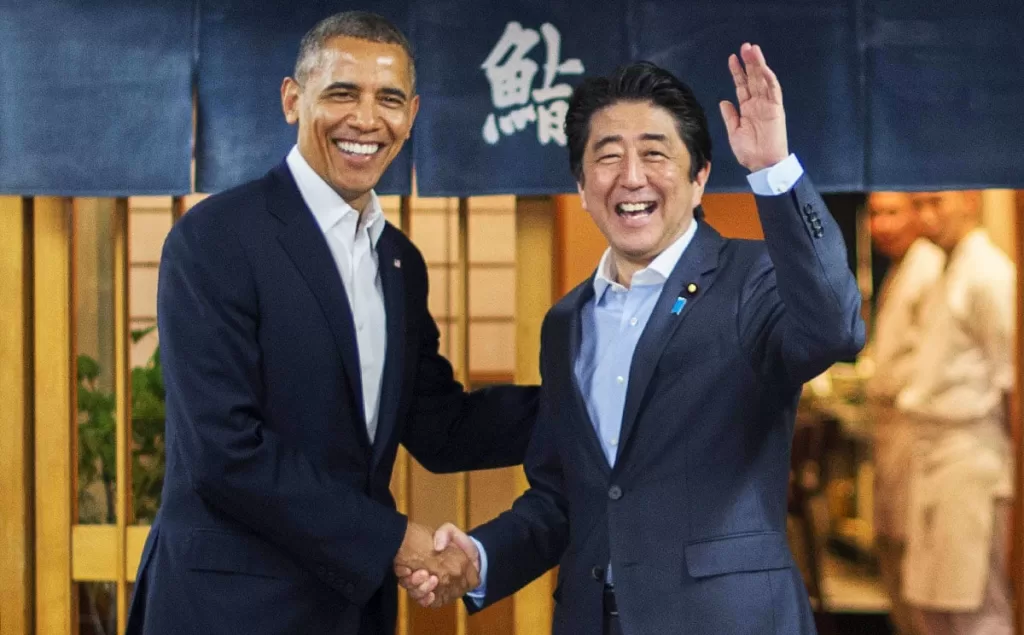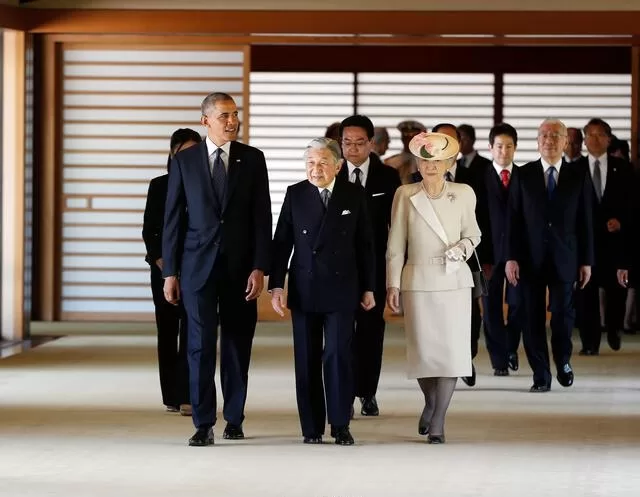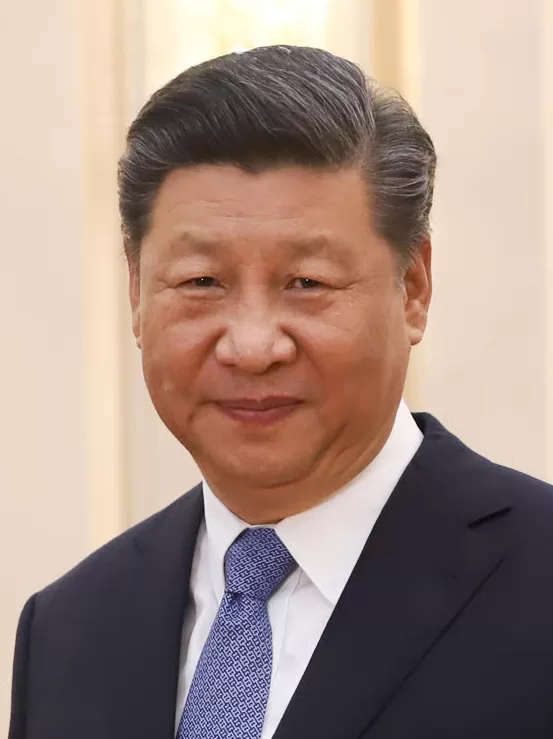President Obama’s April 2014 visit to Asian counties has reinforced concerns about America letting China rise peacefully. During this visit Obama reassured Washington’s allies ‘in the face of threats to stability from North Korea and an increasingly assertive China’. He conveyed that the US is duty-bound to come to Japan’s aid in the event of a conflict with China over a group of disputed islands in the East China Sea.
Obama went further than some analysts had expected in reassuring the Japanese prime minister, Shinzo Abe, that Japan’s dispute with China over the Senkakus islands—known in China as the Diaoyu—were covered by the allies’ post-war security treaty. However, he reiterated America’s refusal to take sides in the sovereignty dispute and called on China and Japan to resolve their differences through dialogue. “Our commitment to Japan’s security is absolute and article five [of the security treaty] covers all territories under Japan’s administration, including the Senkaku islands,” Obama said during a joint press conference with Abe. “We don’t take a position on final sovereignty on the Senkakus but historically they’ve been administered by Japan and should not be subject to change unilaterally”. During this visit, America also signed a defence act with the Philippines to strengthen latter’s position in its maritime dispute with China.
Obama’s assertion that the Senkaku dispute falls under the US-Japan bilateral security treaty drew an angry response from China. A Chinese foreign ministry spokesman said that China had “indisputable sovereignty” over the islands and that “the so-called Japan-US alliance” should be careful not to impinge on China’s territorial rights. “The US should respect facts, take a responsible attitude, remain committed to not taking sides on territory and sovereignty issues, speak and act cautiously and earnestly play a constructive role in regional peace and stability,” the spokesman added.
China’s rapid development has attracted worldwide attention during recent years. In pursuing the goal of rising in peace, the Chinese leadership has strived for improving relations with all the nations of the world. It adheres to a strict policy of strategic self-restraint. While continuing to signal its territorial and economic claims in the East and South China Seas, Beijing has concluded agreements with 12 neighbouring countries over the demarcation of its disputed land border. Chinese government has reiterated time and again that military muscle flexing offers no solution and that joint development of the abundant offshore resources could help overcome disputes.
Within the G-20, China plays a pivotal role in shaping the new global order. To become a mainstream player of international economy, it has also joined the World Trade Organization. According to China’s strategic plans, it will take until 2050, before it could be called a modernized, medium-level developed country. China’s rise can be seen as a typical political process. Success of economic development always has attendant political and security implications. China’s stunning economic growth has convinced the West that it is just a matter of time until China becomes a world superpower.

There are competing narratives and counter narratives to portray “China threat” thesis: first, the ideological and cultural factors; Samuel Huntington had added a cultural factor to rise of China. In his book “The Cash of Civilizations”, he mischievously constructed an “unholy alliance between Islamic and Confucian civilizations”. Secondly, the geopolitical and geo economic perspective has it that even if China sheds off its ideological straitjacket, nationalism may still drive China into a course of clash with the United States; especially if the US refuses to accommodate or share the leadership with China as a rising power.
It is not easy for the United State to reconcile with the reality of passing over the mantle of super power without fighting it out militarily. Due to these considerations, the United States’ China policy often oscillates from demonization to romanticization of China, and from containment to engagement. Strategic response from the US is hazy, in the short run, it is executing a containment policy; and is also bracing up for confrontation, if needed, in the long run.
Chinese former premier Wen Jiabao had put forward the thesis of “China’s peaceful rise” in his speech to a Harvard University audience in December 2003. Salient features of this thesis are: China’s development depends upon and in return will contribute to the world peace; China will resort to peaceful means for development; China’s development will rely more on its own resources and market; China is prepared for a long-term process of hard work, even several generations, for economic prosperity; and as China achieves its economic development, it will not seek hegemony in the world or come out as a threat to any country.
In good sprite, China played down the significance of ties between Tokyo and Washington. A commentary carried by the official Xinhua news agency described Obama’s visit “a carefully calculated scheme to cage the rapidly developing Asian giant”, adding that “the pomp and circumstance Obama receives … cannot conceal the fact that Tokyo has become a growing liability to Washington’s pursuit of long-term interests”. The state-run “Global Times” said in an editorial that the US had “basically recognised a stronger China”, adding that while Washington “explicitly shows favour for Tokyo and Manila” in territorial disputes it had also sought to avoid irritating China due to its economic importance.

The Senkakus have been a source of rising tension between the regions’ two biggest economies since 2012, when Japan effectively nationalised the uninhabited islands, which are surrounded by rich fishing grounds and large untapped deposits of natural gas. The move sparked fury in China, where protesters took to the streets in several cities, forcing the temporary closure of some Japanese businesses in the country.
Obama has come under pressure to demonstrate that the US is serious about its promised strategic “pivot” towards the Asia-Pacific. But he has to tread a fine line between reassuring allies while avoiding harming US ties with China, the world’s second-biggest economy with a growing military presence in the region.“We have strong relations with China, a critical country not just to the region but to the world,” Obama said. “We want to encourage the continued peaceful rise of China, and work together on trade and climate change”, he added. “But what we have also emphasised is that all of us have responsibility to maintain the rule of law – large and small countries have to abide by what is considered just and fair and resolve disputes in a peaceful fashion,” he added, in an apparent reference to China’s dispute with the Philippines over islands in the South China Sea.
China has persistently played a positive role during numerous international conflicts and crisis and has earned a good repute amongst peace loving nations. China is pioneer of new style of constructive diplomacy at the UN, resulting in slashing down of frequency of veto usage by the P-5. China’s role has been quite positive during ongoing conflicts and crisis like the Arab spring, the Syrian crisis, the Crimean conflict, Iranian nuclear deal, post-2014 settlement of Afghanistan, etc.
Over decades, China’s leadership has made its case for peaceful rise by highlighting that China’s development creates great opportunities and that globalization spreads them to all corners of the world. Pakistan wishes China well in its surge towards a peaceful rise with a caution that such an effort may not totally stay peaceful as economic development and national security are always intricately linked; there is considerable overlapping in these domains, and these generally move in tandem. Economic development needs secure environment and sustainable secure environment needs robust economic growth — akin to the hen and chicken analogy.




